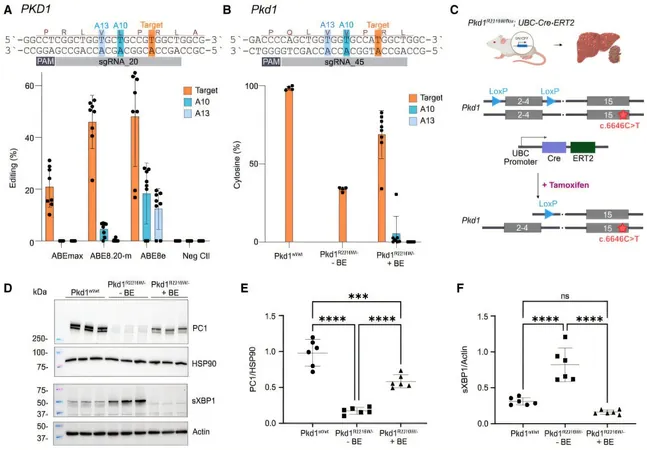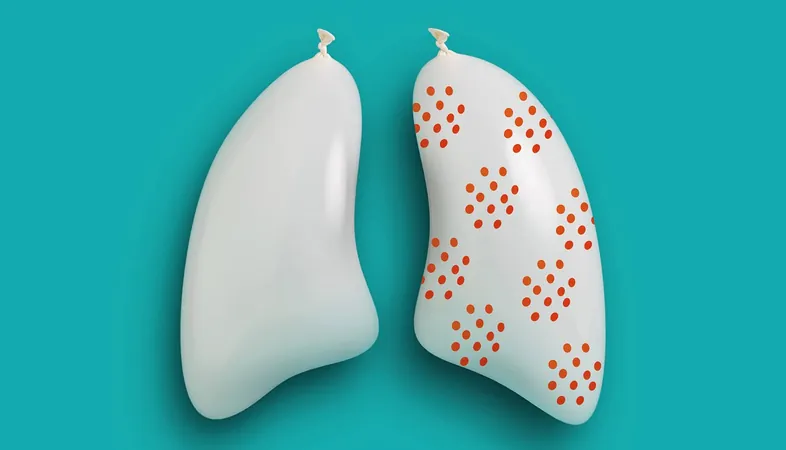
Revolutionary Gene Editing Offers Hope for Inherited Kidney Disease
2025-09-17
Author: Yu
In a groundbreaking research breakthrough, scientists in Berlin have harnessed the power of gene editing to tackle one of the most common genetic disorders—autosomal dominant polycystic kidney disease (ADPKD). Led by Michael Kaminski and his team, the researchers successfully repaired harmful mutations in both mouse and human cells, offering new hope for patients suffering from this challenging condition.
ADPKD affects approximately one in every thousand children, resulting from mutations in the PKD1 or PKD2 genes. These genetic glitches lead to the formation of painful cysts in the kidneys, escalating the risk of high blood pressure, serious infections, and even kidney failure.
A New Hope in Treatment Options
Currently, the only approved medication for ADPKD primarily alleviates symptoms and often brings severe side effects, leaving many patients with inadequate relief. "Patients may suffer from significant urine loss and still struggle with liver cysts, which remain untreated," warns Dr. Kaminski, a renowned authority at the Berlin Institute for Medical Systems Biology.
However, Kaminski and an international team of researchers from prestigious institutions like Yale University and the University of Colorado recently reported promising findings. Utilizing advanced base editing techniques, they corrected mutations in human and mouse cells, significantly reducing liver cysts in their mouse models.
Precision Editing Unleashes Potential
Focusing on the PKD1 gene, the research team identified 39 different point mutations, achieving precise corrections in approximately a third of those within a cell culture context. They targeted a problematic mutation found in urine samples of ADPKD patients, successfully restoring the expression of a vital protein known as polycystin-1—paving the way for diminished cellular stress.
In an exciting experiment, they packaged the necessary components for base editing into viruses and delivered them to mice, observing a dramatic reduction in both the size and number of liver cysts.
Challenges Remain But Progress Is Promising
Despite the significant strides made, Kaminski acknowledges there’s still work to be done. His team is actively working on enhancing delivery systems to ensure that gene-editing tools can effectively target the kidneys—the epicenter of the condition. They aim to explore additional mutations and determine whether early-stage interventions are as effective in advanced disease scenarios.
"Our ultimate goal is to ascertain the most effective timing for treatment to maximize benefits for patients," he concludes.
The Future Is Bright for ADPKD Patients
As researchers continue to unravel the complexities of gene editing, families affected by ADPKD can remain hopeful. This novel approach not only provides a glimpse of potential cures but also reshapes the landscape for treating hereditary diseases that have long plagued countless lives.






 Brasil (PT)
Brasil (PT)
 Canada (EN)
Canada (EN)
 Chile (ES)
Chile (ES)
 Česko (CS)
Česko (CS)
 대한민국 (KO)
대한민국 (KO)
 España (ES)
España (ES)
 France (FR)
France (FR)
 Hong Kong (EN)
Hong Kong (EN)
 Italia (IT)
Italia (IT)
 日本 (JA)
日本 (JA)
 Magyarország (HU)
Magyarország (HU)
 Norge (NO)
Norge (NO)
 Polska (PL)
Polska (PL)
 Schweiz (DE)
Schweiz (DE)
 Singapore (EN)
Singapore (EN)
 Sverige (SV)
Sverige (SV)
 Suomi (FI)
Suomi (FI)
 Türkiye (TR)
Türkiye (TR)
 الإمارات العربية المتحدة (AR)
الإمارات العربية المتحدة (AR)